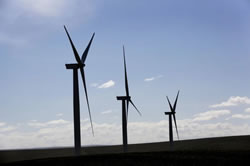Why companies like: Google and Walmart are buying so much wind power
 Brady Dennis for The Washington Post: The U.S. wind energy industry had a memorable 2015, from installing thousands of new turbines across the country to supporting a growing number of jobs.
Brady Dennis for The Washington Post: The U.S. wind energy industry had a memorable 2015, from installing thousands of new turbines across the country to supporting a growing number of jobs.
But perhaps one of the most noteworthy brights spots of the past year, according to an annual report released Tuesday by the American Wind Energy Association (AWEA), was the growing demand for wind energy from major corporations. High-tech firms such as Google Energy, Facebook and Amazon Web Services, as well as more traditional companies such as Procter & Gamble, General Motors, Walmart and Dow Chemical, have signed contracts to purchase increasing amounts of wind energy in coming years.
Corporations and other non-utility customers — including some municipalities and universities — accounted for more than half of the wind power capacity sold through so-called power purchase agreements in 2015, according to the AWEA. The group said that corporate and other non-utility buyers have signed contracts for more than 4,500 megawatts of wind power capacity, or enough to power the equivalent of about 1.2 million American homes. Cont'd...
Comments (0)
This post does not have any comments. Be the first to leave a comment below.
Featured Product

